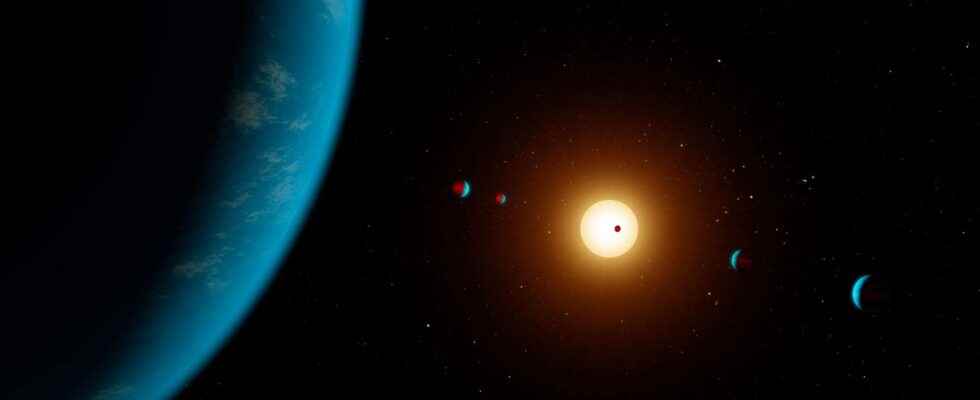NASA scientists recently added 301 exoplanets to the list of planets discovered using the Kepler Space Telescope, supplementing the 4,569 planets already validated. For this they used a method of deep learning, a type of artificial intelligence capable of learning on its own.
You will also be interested
[EN VIDÉO] Proxima b, the closest exoplanet to us! It is the only planet known to date orbiting Proxima Centauri, a star located in Alpha Centauri. This system is closest to our Solar System, “only” 4,244 light years away.
None of these planets would be Earth-like, nor would they be in the habitable zone of their star. But they still share characteristics similar to the entire population ofexoplanets already known and confirmed.
ExoMiner, a revolutionary deep learning classifier
The methods of deep learning are machine learning methods: theartificial intelligence is able to automatically learn a task when given enough data. It is based on a network made up of hundreds of layers of neurons artificial, inspired by the functioning of brain human: thus, each “layer” receives and analyzes the information from the previous layer, allowing a gradual interpretation of the data initially provided.
The researchers of the Nasa who participated in the study used a method called ExoMiner, exploiting the supercomputer Pleiades of Nasa, and which differs from its predecessors by its astonishing precision: according to Hamed Valizadegan, ExoMiner project manager and manager of machine learning with the Ames University Space Research Association, ” when ExoMiner says something is a planet you can be sure it’s a planet “. Drawing inspiration from tests and properties that experts in the field use to confirm new exoplanets, ExoMiner learns from both cases of confirmed exoplanets as well as false positives.
More than 100,000 transit signals to process
The scientists used transit data collected by the Kepler telescope developed by NASA to detect exoplanets. He uses for this the transit method which detects the possible presence of a planet by measuring the variation of brightness of the star around which the candidate orbit : when the luminosity decreases, the telescope deduces the passage of an object in front of the star.
ExoMiner allows here to confirm the presence of an exoplanet for a measured transit: the method is able to eliminate false positives, and reveals the authentic signatures of the planets orbiting their star, while helping scientists to understand in detail the “reflection” that led to a given conclusion. The task would indeed be too tedious for a human, given the enormous amount of data to be processed and the wide variety of parameters to be taken into account when analyzing the measurements collected.
And ExoMiner is still in its infancy: thanks to its latest largely conclusive results, the scientists responsible for artificial intelligence plan to use it to process the data that will be collected in the near future, in particular thanks to the mission Tess (Satellite for the census of exoplanets in transit) from NASA, or to the Plato (acronym of PLAnetary Transits and Oscillations of stars) of the’ESA. The list of confirmed exoplanets is therefore destined to expand soon!
Interested in what you just read?
.
fs3
